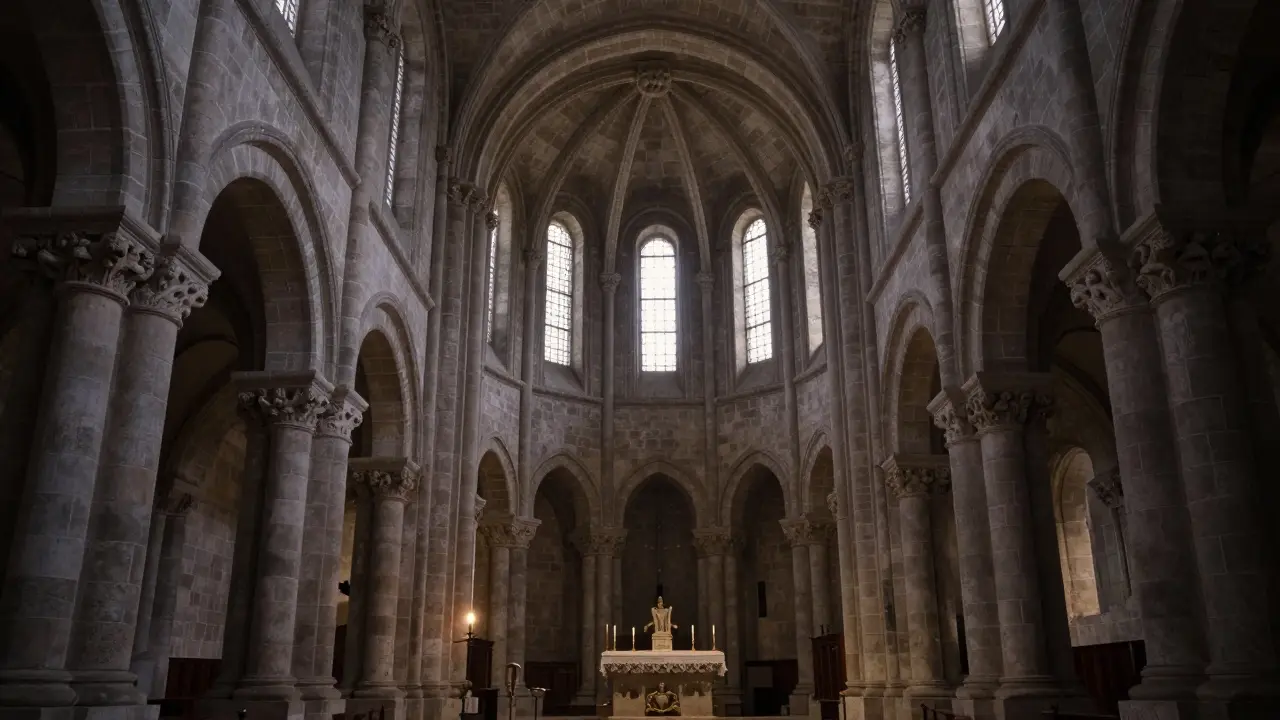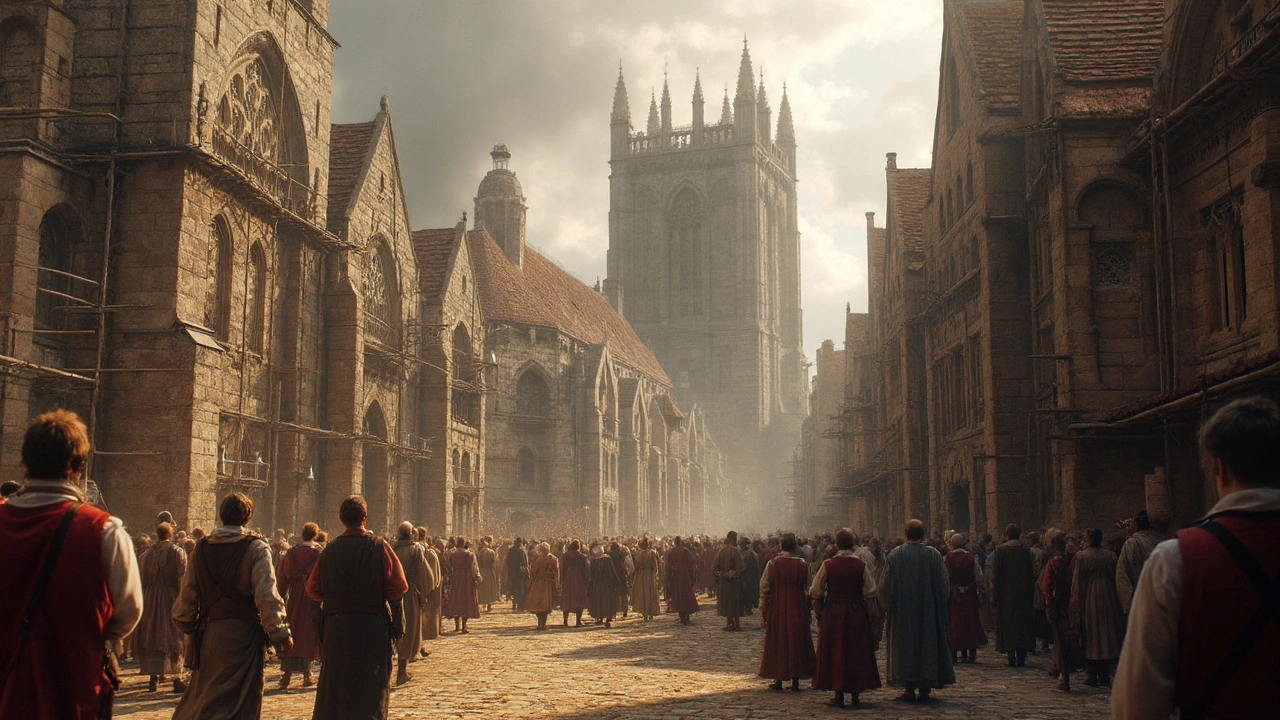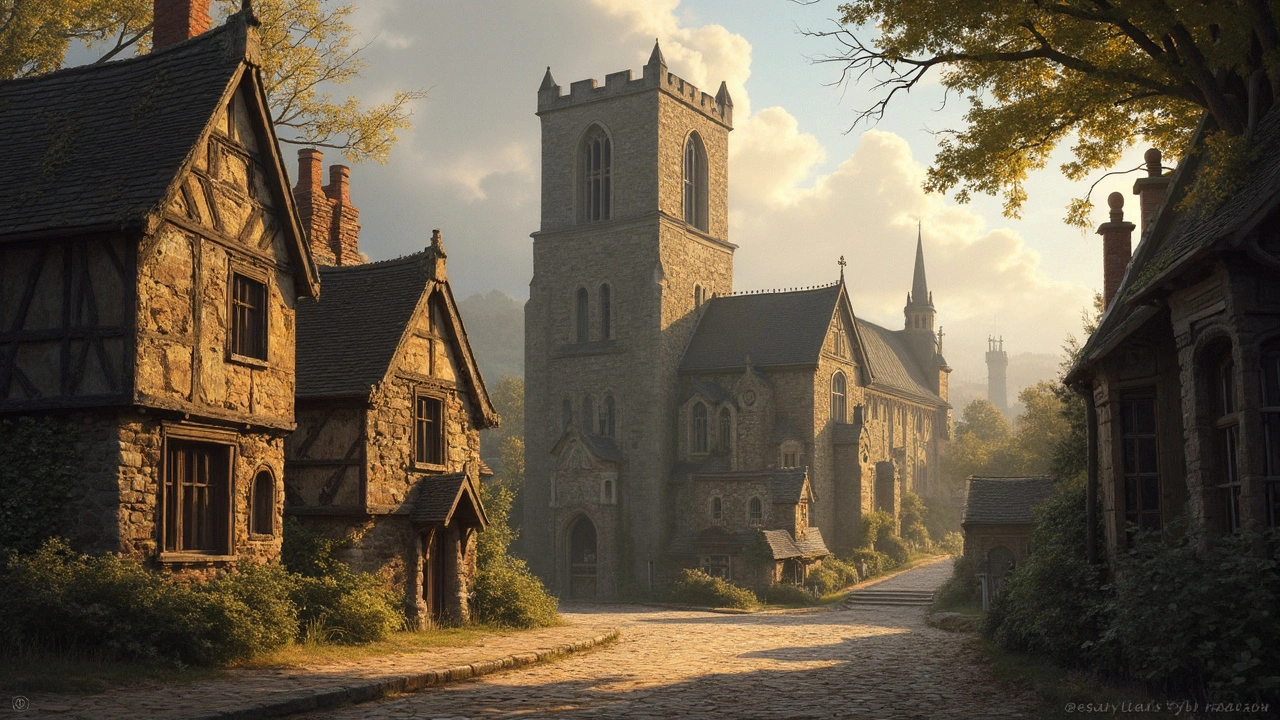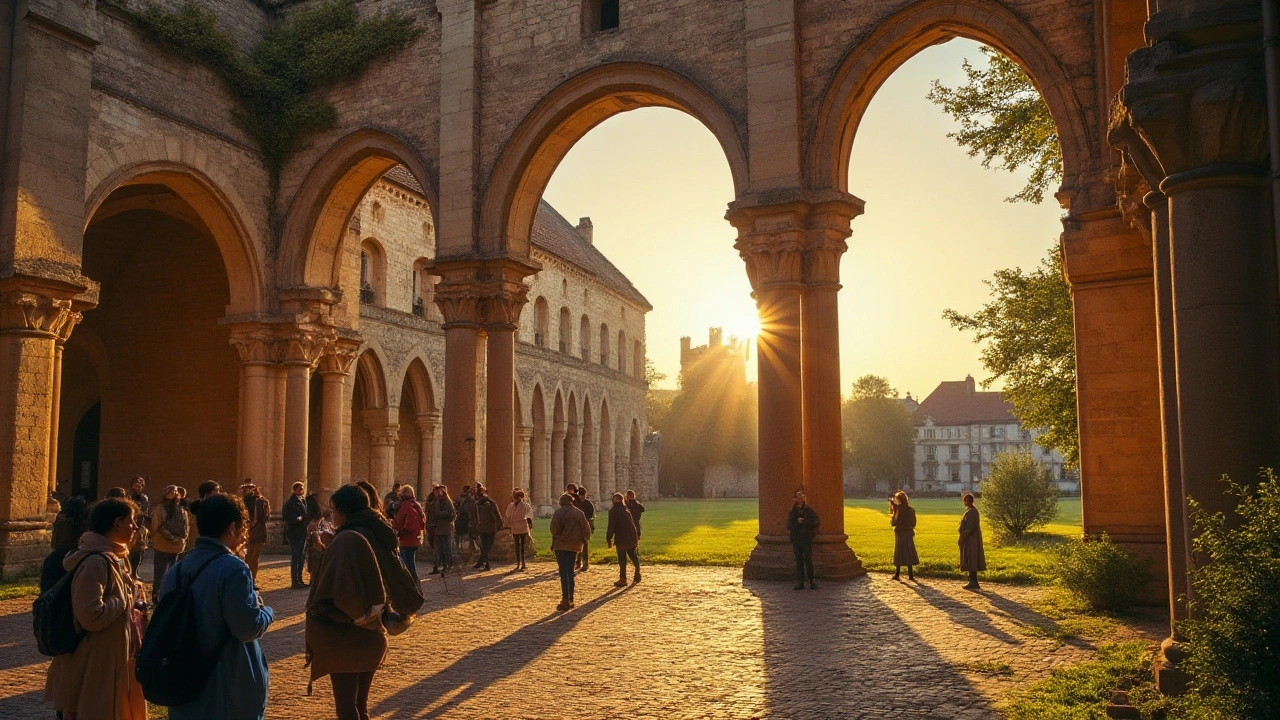Romanesque Architecture: How to Spot and Appreciate It
Romanesque buildings look solid enough to last forever—and many do. If you walk up to a medieval church and feel like you could lean your shoulder on the wall, you’re probably standing before Romanesque architecture. This style dominated Europe roughly between 1000 and 1150 AD and set the stage for the Gothic cathedrals that followed.
Key features to spot
Start with the basics: thick stone walls, small windows, and rounded arches. Those rounded arches show up over doors, windows, and arcades. Interiors often feel dim because windows were tiny—builders prioritized strength over light. Look for barrel vaults (long, tunnel-like ceilings) and simple groin vaults where two barrel vaults cross. Columns are usually sturdy and short, with capitals carved in simple patterns or animal figures.
Decoration is practical and narrative. Carved stone around portals often tells a story—biblical scenes, saints, or strange beasts. These carvings can be rough and expressive; they weren’t trying to be classical perfection. Towers are common, often square and squat, sitting over the crossing or at the west end of the church. If you see a building that feels compact, heavy, and a bit fortress-like, Romanesque is a good bet.
How they built it and why it mattered
Builders used local stone and simple tools. Masonry was the core skill: laying thick courses of stone to create walls that could hold heavy vaults. Without modern cranes, scaffolding and human labor moved large blocks into place. The vaults distributed weight to the walls and piers, which explains the small windows—big openings would weaken the structure. That approach made Romanesque churches safe and long-lasting in unstable times.
Romanesque wasn’t just about structure; it was social. These churches anchored towns and pilgrimage routes. Pilgrims traveled long distances to see relics housed in Romanesque shrines. That flow of people pushed towns to build bigger, stronger churches to host services and markets, and to show civic pride.
Another practical reason to notice Romanesque: it’s everywhere but often overlooked. You’ll find clear examples in France (Cluny, Saint-Savin), Spain (Santiago de Compostela’s older sections), Italy (Pisa’s older structures), and England (Durham’s early Norman work). Many small parish churches also keep Romanesque elements—look under later Gothic additions and you’ll often find original rounded arches or carved capitals hiding in plain sight.
Want to appreciate Romanesque on a visit? Stand back to see the building’s mass, then move closer to study the stonework and portal carvings. Visit during off-hours to catch the quiet, dim interior light—that’s part of the experience. If you’re restoring or renovating, respect the thick masonry and simple proportions; small changes can break the balance that made these buildings last for centuries.
Romanesque architecture rewards slow looking. It’s not about soaring height or delicate tracery; it’s about presence, durability, and stories carved in stone. Once you know the signs, you’ll spot it on city streets and country lanes alike—and you’ll start noticing how this solid medieval style shaped the buildings that followed.

Romanesque Architecture: A Story of Strength and Beauty
Romanesque architecture combines massive stone walls, rounded arches, and sculpted facades to create enduring churches that blend strength with spiritual awe. Built between 800 and 1200 AD, these structures still stand across Europe as testaments to medieval craftsmanship.
Read more
Romanesque Architecture: The Birth of a Grand Style
This article breaks down what makes Romanesque architecture stand out, from its chunky stone walls to its famous rounded arches. You'll get a sense of why this style took off around Europe during the Middle Ages. Curious about the first cathedrals and how people actually built them without cranes? We’ll cover that. Expect stories, unexpected facts, and some tips if you ever set foot in an old Romanesque church.
Read more
Exploring Romanesque Architecture: A Medieval Masterpiece
Romanesque architecture offers a glimpse into the medieval mind with its robust and sturdy designs. Dominated by thick walls, rounded arches, and massive towers, this style emerged around the 10th century. It profoundly influenced the structure of churches and castles throughout Europe. Exploring these architectural marvels reveals intricate carvings and the clever use of light. Experience the mysterious and awe-inspiring reality of buildings that have stood the test of time, and understand the principles that inspired countless architects.
Read more
Exploring the Beauty of Romanesque Architecture: A Journey Through Time
Romanesque architecture emerged as a defining style in medieval Europe, characterized by its massive stone structures, rounded arches, and sturdy pillars. This architectural style, flourishing between the 9th and 12th centuries, set the foundation for the later Gothic architecture. By examining key features such as barrel vaults and decorative arcading, this article unravels the cultural and historical significance of Romanesque design. It also offers insights into exemplary structures that illustrate the architectural ingenuity of the era.
Read more
Exploring Europe's Majestic Romanesque Architecture
Romanesque architecture is a journey through time that showcases Europe’s robust and majestic historical development. Distinctive for its semi-circular arches, sturdy pillars, and massive walls, this architectural style is a cornerstone of European heritage. From the Abbey of Cluny in France to the stunning Cathedral of Pisa, Romanesque buildings tell stories of medieval Europe. Delve into architectural techniques, key structures, and legends that shaped Romanesque design. Discover how these monumental works continue to captivate modern enthusiasts and travelers alike.
Read more